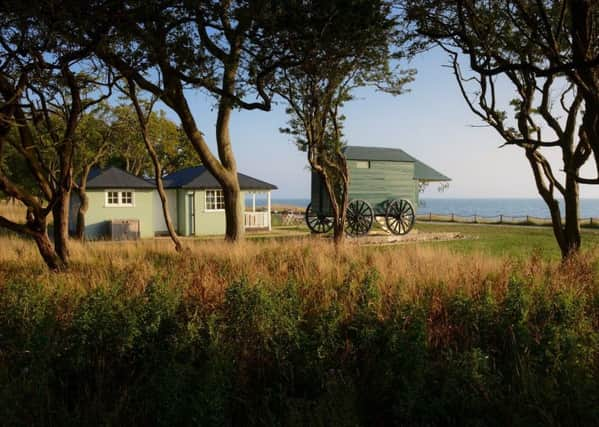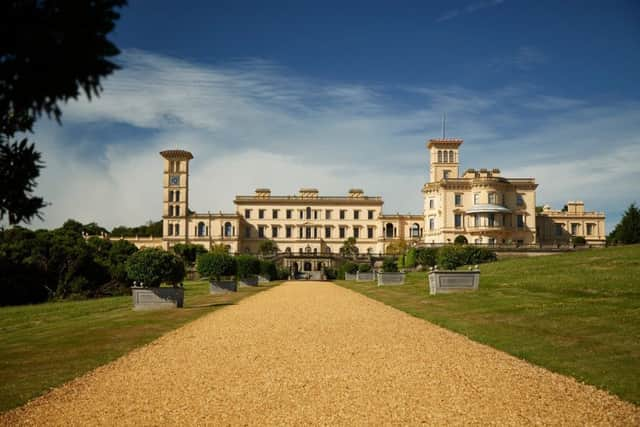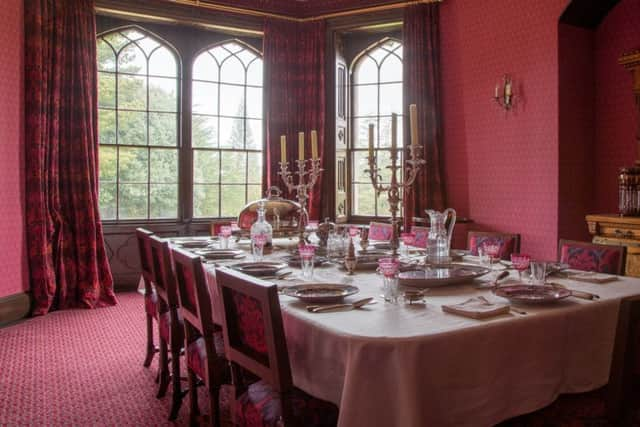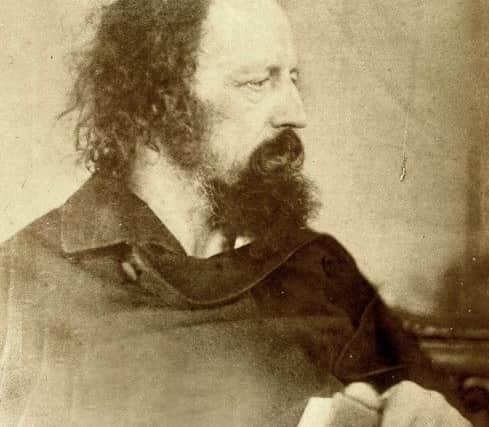Travel review: Isle of Wight


In 1970, 600,000 fans flocked to the Isle of Wight to see Jimi Hendrix play one of his final performances. It remains the biggest crowd ever at a British concert and not surprisingly it was chaotic. Imagine ferrying 600,000 people over the water and back.
I enjoyed a more peaceful 40-minute crossing from Lymington to Yarmouth. Bypassing Cowes and its forest of yachts, the laid-back charms of handsome villages, chalk white cliffs and sandy beaches had a timeless quality. The bucket and spade brigade may flood across the Solent in summer, but there are lesser-known cultural and literary corners to discover too.
Advertisement
Hide AdAdvertisement
Hide AdThe Poet Laureate Alfred Lord Tennyson lived here for 40 years. His house, Farringford at Freshwater, has been newly restored and is now open to the public. Nearby is Dimbola Lodge, the home and studio of the pioneering portrait photographer Julia Margaret Cameron. Tennyson, Charles Darwin and Lewis Carroll all patiently posed for her ten-minute exposures. These eminent Victorians became known as the Freshwater Circle.


Most famous of all is Osborne House at East Cowes, the summer residence of Queen Victoria and Prince Albert, which featured in the film Victoria and Abdul. I fully expected to see Dame Judi Dench sweeping through the corridors.
This grand family home provided the real Victoria and Albert and their nine children with an escape from the claustrophobia of court life in London. Even so, it is plenty rich in decorative furnishings with Minton floor tiles, extravagant chandeliers, paintings and sculptures. But it’s the small personal details that bring Osborne to life: the speaking tube at the Royal Entrance that connects to a servant atop the tower to alert the household: “She’s here”. The manually operated Queen’s lift hauled up and down by a servant in the basement. The elaborate Privy Council Room where, in 1878, Alexander Graham Bell demonstrated the telephone.
The nursery has the marble sculptured limbs of some of Victoria’s children; The Queen’s bedroom has a brass bolt designed by gadget crazy Prince Albert to allow the door to be locked and unlocked from the bed. Then there’s the macabre post-mortem painting of Albert that Victoria kept by her bedside and, oddly, a tiny plaque on the bed frame marking the date they first slept together and the last.
Advertisement
Hide AdAdvertisement
Hide AdOutside the gardens and “pleasure grounds” extend to their private beach which contains Queen Victoria’s bathing hut and the Swiss Cottage – a full-sized children’s play house. And like the royal family, today’s visitors can use the beach for swimming and picnicking.


From time to time, Prince Albert visited Farringford House on the western tip of the island. The Georgian house, with Gothic and castellated additions, was the home of Alfred, Lord Tennyson, his wife Emily and their sons Hallam and Lionel.
In 2006 when the house came up for sale – it had long been a hotel – islander Rebecca Fitzgerald bought it and a set about a major restoration to recreate the house as it might have been in Tennyson’s day.
Modest in size, it’s now furnished with original and period pieces taken from the Tennysons’ original inventory and provides a fascinating peep into the family life of the troubled poet. Socially awkward, irascible and prone to depression, he smoked heavily and drank liberally: a bottle of port a day by all accounts.
Advertisement
Hide AdAdvertisement
Hide AdHis long-suffering wife Emily ran the household and worked as Tennyson’s manager answering thousands of his fan letters. “I’d as sooner kill a pig as write a letter,” declared Tennyson.


Yet the Tennysons were unusual parents for that era, being both relaxed and affectionate towards their children. Alfred would play football with the boys, take them fossil hunting and in their early years taught them at home in the first-floor schoolroom decorated with delightful illustrations by Edward Lear.
Check out Tennyson’s study, the dining room, library, drawing room and the reception room, with its azure blue wallpaper that apparently no one liked but was hastily put up when the old wallpaper made the boys ill with arsenic poisoning.
Shy to the point of rudeness with strangers, Tennyson enjoyed his friends and made frequent visits to Dimbola Lodge.
Advertisement
Hide AdAdvertisement
Hide AdYou can visit Dimbola, now a delightful small museum showcasing Cameron’s work. She photographed children, maids, friends and family and persuaded, cajoled and bossed the celebrities Tennyson introduced her to. Darwin, Carlyle, Trollope, Browning and Ellen Terry all posed for her, often in outlandish costumes, sometimes in rag and blankets.


Cameron’s “art photography” was viewed at the time with some amusement and she was regarded as merely “a lady amateur”. Today she is deemed to be one of the most influential photographers of the 19th century, with one of her albums recently valued at £3.7m.